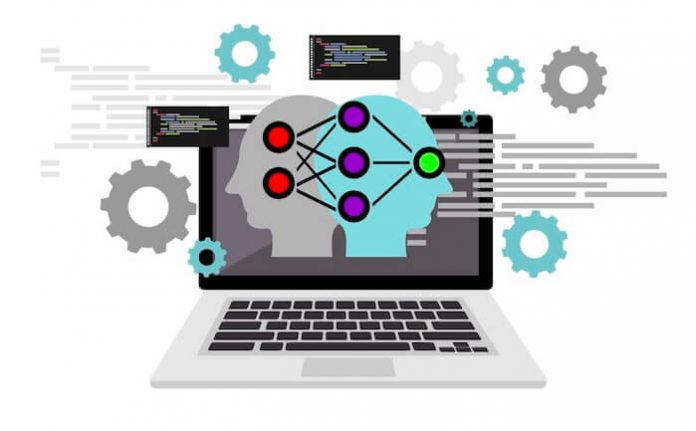
The idea of artificial intelligence (AI) as a part of training strategy can evoke varied reactions. Some people see it as long-overdue innovation. Others can’t shake the image of a robot running amok in a science fiction movie or a world of bias and intrusion into a human process.
Leaving the emotional response aside, let’s consider how AI can realistically be applied to training. The e-learning landscape is fundamentally changing, and AI is really just a form of automation innovation meant to help the right learning get to employees.
Today’s employees expect a training experience tailored to them. Regulators are demanding the same, and the modern workplace thrives on efficiency. AI can better provide that experience while delivering greater insight into what’s working and how ready learners are to apply the training content.
AI Is Already Here
In many ways, AI is already helping people in their everyday lives. When your e-mail program gives you suggestions on how to finish a sentence, that’s AI. When you deliver a muddled command to Alexa, AI figures out what you were trying to say.
Some of the trepidation of attaching AI to compliance training comes from concern around AI making noncompliant or biased decisions, such as when Amazon’s recruiting algorithms were discriminating against women. In cases such as those, usually the fault isn’t with how the AI operated, but rather with how it was programmed by humans who introduced biases into the process.
AI in compliance training utilizes data that users themselves—in this case, employees taking the course—have generated from their participation in a previous training on the same topic. This reveals trends and identifies gaps where an employee may need additional help and allows the training course to automatically focus there. That’s what AI is offering: personalized help and actionable next steps.
The easiest way to take advantage of AI is to think of it not as artificial intelligence but rather as automation. Once something is automated—whether a factory production line, a reporting process, or compliance training—businesses realize that it produces better results with higher quality, consistency, and user satisfaction.
The Quest for Efficiency
In a dream world, employees all would have an encyclopedic knowledge of compliance policy and application. In the real world, however, employees can’t be expected to have that level of expertise. E-learning has helped ease the burden of gathering employees live, but it leaves much to be desired in moving beyond a one-size-fits-all approach.
The current state of enterprise compliance training is like introducing yourself formally to a colleague over and over again. You’d be highly annoyed if that happened to you, so why do we do the same with training that always starts back at the beginning?
By employing behavioral data gathered in training, companies can set automated, AI-driven learning paths. This creates an experience similar to one-on-one learning for every employee, where the digital tutor focuses on what that particular learner needs and builds upon the lesson from the prior interaction.
From a rollout perspective, compliance teams can try their best to manually sort through reams of demographic and assessment data to create multiple unique versions of the course for each learner. In addition to likely being physically impossible for any large global firm, this also would take the teams away from other critical tasks. This capacity limitation is the primary reason compliance teams will acknowledge the shortcomings of their trainings, but most feel unable to do anything about it. AI changes all of that.
More Than Rules
A common use case for AI in compliance training is establishing rules around what content a learner should receive or which topics they should focus on when they are assigned a course. For example, if a manager took anti-corruption training last year and did poorly in identifying government officials, AI recognizes that and, in this year’s rollout, automatically focuses their course content to reinforce the lessons on this topic.
This makes compliance and HR teams’ jobs easier by allowing the same course to be assigned to all learners yet personalizing the course for each person. And because it uses each employee’s own data and assigns the training to all, there is no question of bias or any adverse implications.
This use case only scratches the surface of what AI can accomplish. Other examples include:
- Achieving efficiency via automated personalization of learning content
- Increasing risk-based training and alignment to DOJ guidance by assigning and delivering specific content learners need
- Saving time for compliance teams by avoiding the need to create, manage, and deploy multiple course packages and course versions
- Producing high-quality, granular behavioral data that can be used on an ongoing basis
- Spotting trends and impediments that compliance teams can build a strategy around to ensure sustainable growth, safety, and soundness for the business
- Using learners’ time wisely by aligning training to needs
Early Adoption Is Key
Back in the 1990s, as e-mail began emerging as a business technology, many organizations resisted. After all, they had been successful doing everything in person or over the phone, and they thought some novelty technology would never supplant that. When e-mail surged in popularity, early adopters were much better positioned than companies that resisted the communications evolution.
AI is charting a similar path, particularly in the compliance training space. In a few years, organizations that embraced AI early on will find themselves at an advantage. This isn’t a technology you can instantly integrate into all of your compliance activities. It must be integrated incrementally, and the longer you wait, the longer it will take to fully employ.
The data we’ve seen proves this point. Companies that have incorporated AI into their training processes come away with reduced training seat times, higher employee satisfaction, and stronger retention of compliance principles year over year. That translates into more efficiency and less risk—two things every organization will need in the coming years to retain a competitive advantage.




